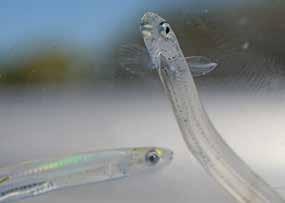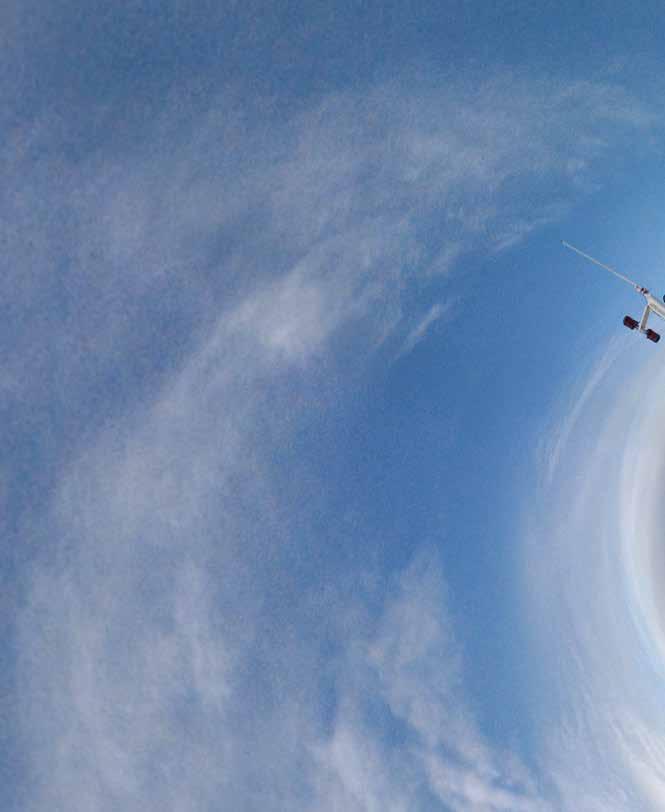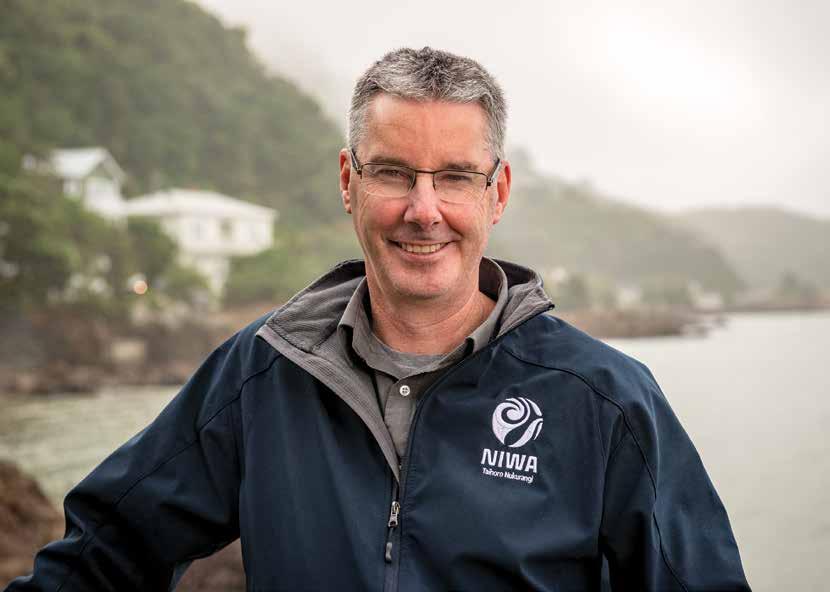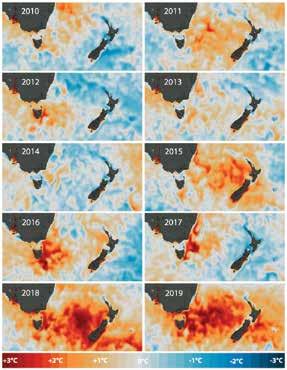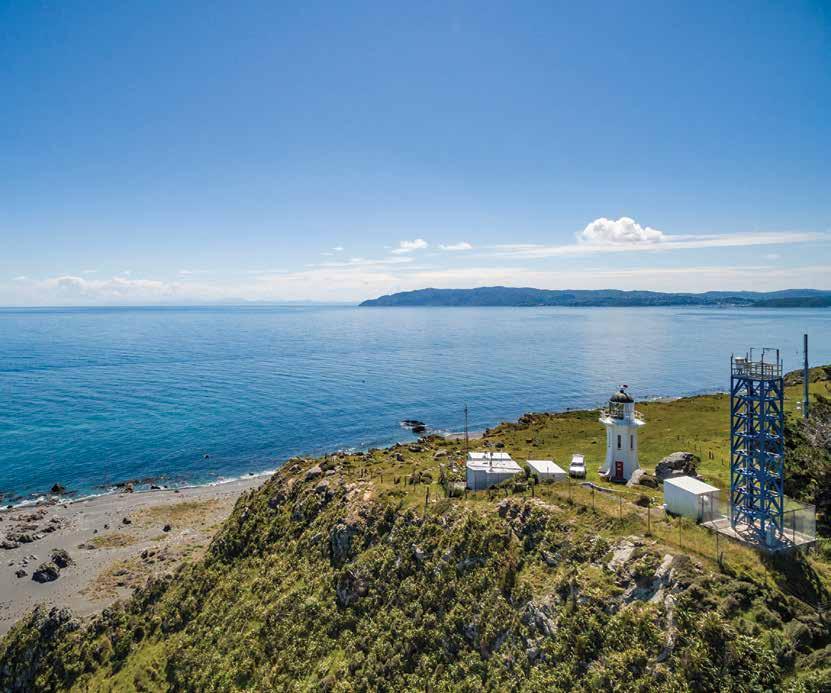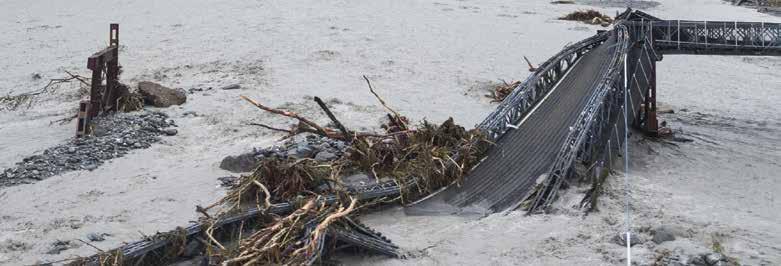Our changing oceans By Lesley Patston he on-going rise of atmospheric carbon dioxide (C02) that is fuelling climate change is also driving significant changes in the waters off our coasts.
About 40 percent of the C02 produced by humans in the past 50 years has ended up in our seas
Rising seas are the most obvious sign of this greenhouse gas-powered transformation. But equally dramatic – if somewhat less visible – are the changes occurring in the ocean itself. More than 90 percent of the excess heat generated as a result of global warming has been absorbed by the oceans, and about 40 percent of the C02 produced by humans in the past 50 years has ended up in our seas. NIWA research confirms that our oceans are getting both warmer and more acidic, and scientists are now focusing on how these changes threaten the delicate balance of life beneath the waves.
It’s getting hot out there Research released earlier this year by NIWA oceanographer Dr Phil Sutton reveals the surface waters in the New Zealand region are significantly warmer than they were 30 years ago.
“And a sobering thought is that even if we somehow managed to turn global warming off right now, the atmosphere would keep warming for some years to come because of the heat that’s stored in the ocean.”
Marine heatwaves are upon us Warm weather and seas have seen Kiwis flocking to the beaches in the past two summers. Both years featured marine heatwaves - periods of five or more days where water temperatures exceed 90% of those measured over the past 30 years. Last summer, measurements of sea temperatures from a fleet of sophisticated buoys found surface waters off our west coast almost four degrees above normal, with this warmer water extending down to 80m in the south of the country. Looking at the trend over the past decade suggests more warm years are on the way.
Our marine environment has seen a warming of about 0.1°C to 0.3°C per decade. This seemingly small rise has already contributed to record sea surface temperatures recorded in the Tasman Sea in the past two years. NIWA Principal Scientist Dr Craig Stevens says this ocean warming is undoubtedly damaging for marine ecosystems. “Species that normally live in tropical waters are extending their ranges and displacing other species. Mobile marine life can escape the warmer temperatures, but sedentary plants and animals will be hardest hit. The impacts are there for aquaculture as well, with warmer waters making it more difficult to grow some finfish or shellfish.” Increasing marine heatwaves are an indication that the earth’s climate system is starting to change. “Individual warm seasons have always occurred, but in future there will be more of them and they will keep getting warmer,” Stevens says.
22 Water & Atmosphere
June 2019
www.niwa.co.nz


